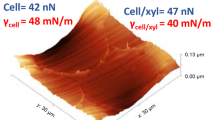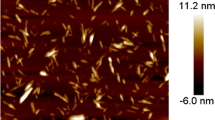Abstract
Lignin, nature’s abundant polymer with a remarkably high carbon content, is an ideal bio-renewable precursor for carbon fiber production. However, the poor mechanical property of lignin-derived fibers has hindered their industrial application as carbon fiber precursor. In this work, process engineering through the application of computational modeling was performed to optimize wet-spinning conditions for the production of lignin precursor fibers with enhanced mechanical properties. Continuous lignin-derived precursor fibers with the maximum possible lignin content were successfully produced in a blend with polyacrylonitrile, as a wet-spinning process facilitator. Response surface methodology was employed to systematically investigate the simultaneous influence of material and process variables on mechanical properties of the precursor fibers. This allowed generating a mathematical model that best predicted the tensile strength of the precursor fibers as a function of the processing variables. The optimal wet-spinning conditions were obtained by maximizing the tensile strength within the domain of the developed mathematical model.
Similar content being viewed by others
References
R. Cox in “Synthetic Fibres: Nylon, Polyester, Acrylic, Polyolefin” (J. E. McIntyre Ed.), 1st ed., pp.167–234, Woodhead Publishing Ltd., UK, 2004.
J. F. Kadla, S. Kubo, R. A. Venditti, R. D. Gilbert, A. L. Compere, and W. Griffith, Carbon, 40, 2913 (2002).
K. Sudo and K. Shimizu, J. Appl. Polym. Sci., 44, 127 (1992).
Y. Uraki, S. Kubo, N. Nigo, Y. Sano, and T. Sasaya, Holzforschung, 49, 343 (1995).
E. Frank, F. Hermanutz, and M. R. Buchmeiser, Macromol. Mater. Eng., 297, 493 (2012).
H. Khayyam, M. Naebe, A. Bab-Hadiashar, F. Jamshidi, Q. Li, S. Atkiss, D. Buckmaster, and B. Fox, Applied Energy, 158, 643 (2015).
H. Khayyam, M. Naebe, O. Zabihi, R. Zamani, S. Atkiss, and B. Fox, IEEE Transactions on Industrial Informatics, 11, 887 (2015).
K. Shirvanimoghaddam, S. U. Hamim, M. Karbalaei Akbari, S. M. Fakhrhoseini, H. Khayyam, A. H. Pakseresht, E. Ghasali, M. Zabet, K. S. Munir, S. Jia, J. P. Davim, and M. Naebe, Compos. Pt. A-Appl. Sci. Manuf., 92, 70 (2017).
O. P. Bahl, Z. Shen, J. G. Lavin, and R. A. Ross in “Carbon Fibers, Third Edition, Revised and Expanded” (J. B. Donnet, T. K. Wang, S. Rebouillat, and J. C. M. Peng Eds.), pp.1–83, Marcel Dekker, New York, 1998.
A. Ziabicki, “Fundamentals of Fibre Formation: The Science of Fibre Spinning and Drawing”, pp.250–345, Wiley, London: New York, 1976.
S. P. Maradur, C. H. Kim, S. Y. Kim, B. H. Kim, W. C. Kim, and K. S. Yang, Synth. Met., 162, 453 (2012).
X. Dong, C. Lu, P. Zhou, S. Zhang, L. Wang, and D. Li, RSC Adv., 5, 42259 (2015).
K. Xia, Q. Ouyang, Y. Chen, X. Wang, X. Qian, and L. Wang, ACS Sustainable Chem. Eng., 4, 159 (2016).
A. Lehmann, H. Ebeling, and H. P. Fink, US Patent, 0194603 (2012).
P. J. Bissett and C. W. Herriott, US Patent, 0003471 (2012).
D. A. Baker and T. G. Rials, J. Appl. Polym. Sci., 130, 713 (2013).
G. Husman, “Development and Commercialization of a Novel Low-cost Carbon Fiber”, Available at http://www1. eere.energy.gov/vehiclesandfuels/pdfs/merit_review_2012/lightweight_materials/lm048_husman_2012_o.pdf accessed 2014.
Y. Ma, S. Asaadi, L. Johansson, P. Ahvenainen, M. Reza, M. Alekhina, L. Rautkari, A. Michud, L. Hauru, M. Hummel, and H. Sixta, Sustainable Chem. Green Chem., 8, 4030 (2015).
H. C. Liu, A. Chien, B. A. Newcomb, Y. Liu, and S. Kumar, ACS Sustainable Chem. Eng., 3, 1943 (2015).
M. Zhang and A. A. Ogale, Carbon, 69, 626 (2014).
M. Zhang and A. A. Ogale, J. Appl. Polym. Sci., 133, 43663 (2016).
R. H. Myers, D. C. Montgomery, and C. M. Anderson-Cook, “Response Surface Methodology: Process and Product Optimization Using Designed Experiments”, 3rd ed., pp.1–62, Wiley, USA, 2009.
A. K. Gupta, D. K. Paliwal, and P. Bajaj, J. Macromol. Sci., Part C, 31, 1 (1991).
A. Oroumei, B. Fox, and M. Naebe, ACS Sustainable Chem. Eng., 3, 758 (2015).
J. B. Donnet and R. C. Bansal, “Carbon Fibers”, 3rd ed., pp.8–9, Marcel Dekker, Inc., New York, 1998.
D. C. Montgomery and G. C. Runger, “Applied Statistics and Probability for Engineers”, 3rd ed., pp.505–570, John Wiley & Sons, US, 2003.
M. A. Bezerra, R. E. Santelli, E. P. Oliveira, L. S. Villar, and L. A. Escaleira, Talanta, 76, 965 (2008).
J. P. Bell and J. H. Dumbleton, Text. Res. J., 41, 196 (1971).
J. S. Tsai and C. H. Lin, J. Appl. Polym. Sci., 42, 3045 (1991).
C. Wang, S. S. Kelley, and R. A. Venditti, ChemSusChem, 9, 770 (2016).
T. Saito, R. H. Brown, M. A. Hunt, D. L. Pickel, J. M. Pickel, J. M. Messman, F. S. Baker, M. Keller, and A. K. Naskar, Green Chem., 14, 3295 (2012).
M. Elices and J. Llorca, “Fiber Fracture”, pp.27–54, Elsevier Science Ltd., Oxford, 2002.
J. Smook, W. Hamersma, and A. J. Pennings, J. Mater. Sci., 19, 1359 (1984).
S. H. Bahrami, P. Bajaj, and K. Sen, J. Appl. Polym. Sci., 89, 1825 (2003).
B. S. Gupta and M. Afshari in “Handbook of Tensile Properties of Textile and Technical Fibres” (A. R. Bunsell Ed.), p.486, Woodhead Publishing Limited, North America, 2009.
S. Rosenbaum, J. Appl. Polym. Sci., 9, 2071 (1965).
D. Sawai, A. Yamane, T. Kameda, T. Kanamoto, M. Ito, H. Yamazaki, and K. Hisatani, Macromolecules, 32, 5622 (1999).
R. A. Allen, I. M. Ward, and Z. Bashir, Polymer, 35, 4035 (1994).
X. D. Liu and W. Ruland, Macromolecules, 26, 3030 (1993).
G. Henrici-Olivé and S. Olivé, “Chemistry”, p.123, Springer Berlin Heidelberg, Berlin, Heidelberg, 1979.
Author information
Authors and Affiliations
Corresponding author
Rights and permissions
About this article
Cite this article
Oroumei, A., Naebe, M. Mechanical property optimization of wet-spun lignin/polyacrylonitrile carbon fiber precursor by response surface methodology. Fibers Polym 18, 2079–2093 (2017). https://doi.org/10.1007/s12221-017-7363-9
Received:
Revised:
Accepted:
Published:
Issue Date:
DOI: https://doi.org/10.1007/s12221-017-7363-9




